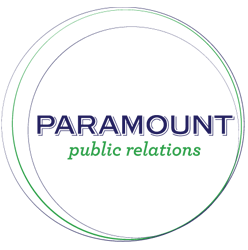Here is an excellent article from PR Daily every PR person should read as a reminder of the importance of SEO in any PR campaign.
6 SEO rules every PR pro should live by
Search engine optimization (SEO) determines where and how businesses rank on search engines such as Google, Bing, and Yahoo. As the competition for online real estate continues to heat up, B2B and B2C marketers have planned to increase their SEO budgets by 43 percent and 45 percent, respectively.
With marketing departments increasingly seeing more value in digital services, PR professionals must understand how to best incorporate SEO tactics into their service offerings. Become your client’s trusted SEO consultant with these six rules to live by:
1. Take advantage of Google’s free tools. Claim your business’s location on Places for Business, and suggest that your clients follow suit. The same goes for Google+, which can and does influence Google Search. A +1 is similar to link-backs and Web traffic, in that it helps Google determine which sites people deem important. Last, identify the top search terms in your client’s industry for which they’d like to “own” a top spot in search results, and then use the Google AdWords Keyword Tool to find which phrases are searched most frequently. Sprinkle these words throughout your news releases and media advisories.
2. Always link to your client’s homepage in an email pitch. News outlets’ websites can generate some of the strongest link-backs for your clients. To increase the chances that your client’s name will be hyperlinked in a reporter’s story, always include it in your email correspondence with media contacts.
3. Never distribute a hyperlink-free news release. Take every opportunity to drive traffic to your client’s website, whether it’s through a release that crosses the national newswire or one that’s simply emailed to a media list. The rule of thumb is to use three to four hyperlinked keywords per every 400 words. Anchor text should direct clicks to pages within the company website that are most relevant, such as a page where a study’s full report can be found, where people can download an infographic, or where a particular service offering is described in detail.
4. Make the most of your news release’s lead paragraph. Search engine results often display only the first 75 to 100 characters of body text. Start with the most important, keyword-rich information to ensure that’s what Google uses to describe the release.
5. Start blogging. A company blog is one of the best ways to continually update your site with strong keywords. Blogs can be shared on popular social networks, thus creating a channel to increase site traffic. Plus, guest blogging opportunities may arise, and these can generate powerful link-backs from other sites. Map out a content strategy, know which keywords you want to target and stick to a publishing schedule. Blog posts published on Monday and Tuesday mornings often do best, traffic-wise.
6. Become the Web developer’s best friend. If your client is launching a website, you will likely be brought on to write the copy for each page. Take this project a step further by working closely with the developer to see how the site is being built to accommodate strong SEO. Meta title text—the page title you see in search results and at the top of your browser—is extremely important for SEO. Suggest title text for every page on the site by using Google’s Keyword Tool and your client’s Google Analytics account, which will show you how they’re already being found online.
What other SEO tactics have you embraced in your PR work?
Kathleen McFadden is an account executive as Buchanan Public Relations and co-chair of the PR Committee for the Public Relations Global Network. Follow her on Twitter @kathleenmcf. A version of this story originally appeared on the agency’s blog.
http://www.prdaily.com/Main/Articles/14753.aspx

